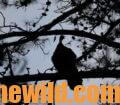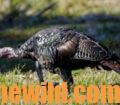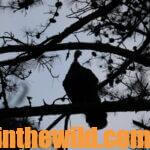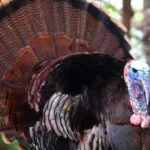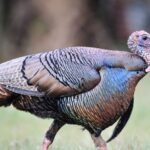Editor’s Note: After the early days of hunting turkeys in the 1970s, listening to audio tapes on a cassette recorder was the way most turkey hunters learned how to call wild turkeys. One of the main reasons was due to cassette tape recorders being portable. Many cars then had cassette tape players in their dashboards. However, audio devices have improved so much since then that now with an audio book like my Audible “Outdoor Life’s Complete Turkey Hunting,” available at https://www.amazon.com/gp/product/B09Z5JHY42/ref=dbs_a_def_rwt_hsch_vapi_taud_p3_i4,
you can learn to call wild turkeys on your cell phone, your computer or your tablet. I believe that hearing an expert call wild turkeys and then imitating the sounds he makes is still one of the best ways to learn to call wild turkeys.
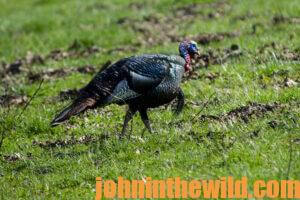 Then in the 1980s, when turkey-hunting information and turkey-calling tapes still were hard to find, I recorded “Outdoor Life’s Complete Turkey Hunting,” tape as a companion to my book, “Outdoor Life’s Complete Turkey Hunting.” Since many people didn’t know or never had heard wild turkeys calls, I asked one of the best-known turkey researchers, biologist Lovett Williams, who actually had recorded about all of the known sounds that turkeys made at that time, to be a part of the tape, that’s now an Audible book.
Then in the 1980s, when turkey-hunting information and turkey-calling tapes still were hard to find, I recorded “Outdoor Life’s Complete Turkey Hunting,” tape as a companion to my book, “Outdoor Life’s Complete Turkey Hunting.” Since many people didn’t know or never had heard wild turkeys calls, I asked one of the best-known turkey researchers, biologist Lovett Williams, who actually had recorded about all of the known sounds that turkeys made at that time, to be a part of the tape, that’s now an Audible book.
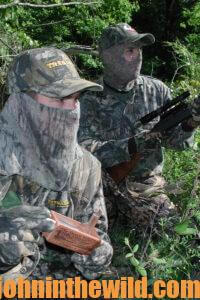
Lovett Williams: The first sound that a turkey hunter usually will hear in the morning is the hoot of an owl. Hunters use an owl call to try and make the turkey gobble back to them after the turkey hears the barred owl. The barred owl call is one of the favorite calls that most turkey hunters use because it is so loud. Often a loud sound is required to make a turkey gobble. Many other sounds are also useful to coax a turkey into gobbling – like the crow call and the pileated woodpecker call. Giving those calls – perhaps at dawn – when a male turkey’s still on the roost, hopefully will make that turkey gobble while he’s still in the tree. Then the hunter has a starting point where he may be able to move close to that turkey and start his hunt by calling.
John E. Phillips: To make the sound of the barred owl, what instrument or device do you use?
 Williams: The barred owl is the most-vocal and comical – this owl laughs a lot – of all the owl species. I enjoy listening to a barred owl and trying to mimic his calls almost as much as I like to call to wild turkeys. The staccato 8-note cadence of the barred owl can be remembered easily by saying, “Who cooks for you all,” and sort of draw out the, “You all” part of the call. I like to use my natural voice, but a simple owl hoot will get the job done. I usually give two series of that cadence, “Who cooks for you all.”
Williams: The barred owl is the most-vocal and comical – this owl laughs a lot – of all the owl species. I enjoy listening to a barred owl and trying to mimic his calls almost as much as I like to call to wild turkeys. The staccato 8-note cadence of the barred owl can be remembered easily by saying, “Who cooks for you all,” and sort of draw out the, “You all” part of the call. I like to use my natural voice, but a simple owl hoot will get the job done. I usually give two series of that cadence, “Who cooks for you all.”
Phillips: The next call usually heard in quiet woods is the tree call of the hen turkey.
Williams: The tree call is a real soft, nasal, three-to-six-note yelp that’s given by turkey hens early in the morning when they first wake up – often when there’s not much daylight. The tree call isn’t very loud and, more than likely, you won’t be able to hear it, unless you’re within 30-50 yards of roosted hen turkeys. This call is used to stimulate a gobbler that’s still on the roost to gobble that will give an indication of where he’s roosted. Then the hunter can learn exactly where the male bird is located. When a tree call is given, you’re beginning to attract that gobbler.
 Phillips: After you’ve located a turkey, and you know where the gobbler is roosted, then there’s a sequence of calls that turkey hunters can use to try and lure the tom turkey out of the tree and into range of their shotguns. After using the tree call, the next call a hunter often hears is a fly-down cackle. In the spring, the gobbler is more interested in being with hens than he is feeding, drinking or even staying alive. Tell us when this call is given and why.
Phillips: After you’ve located a turkey, and you know where the gobbler is roosted, then there’s a sequence of calls that turkey hunters can use to try and lure the tom turkey out of the tree and into range of their shotguns. After using the tree call, the next call a hunter often hears is a fly-down cackle. In the spring, the gobbler is more interested in being with hens than he is feeding, drinking or even staying alive. Tell us when this call is given and why.
Williams: The fly-down cackle is a very-harsh sound that both hens and gobblers may make at times. They’ll generally use this call when they are flying a short distance, like from the roost tree to the ground or flying over a fence. During this time, they may give a short cackle, perhaps 3-4 notes. A full-blown elaborate cackle turkeys make when flying out of a tree may consist of 30-40 notes. Turkeys don’t give a cackle every time they fly. The cackle can be a difficult sound for hunters to make. But by imitating it, you’ll give a good call to use to make a gobbler gobble in response to it.
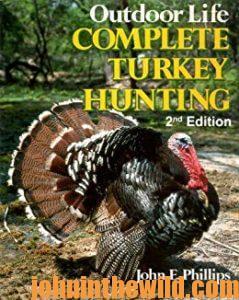 You’ll be able to hear 10% for free of the “Outdoor Life’s Complete Turkey” audible book at https://www.amazon.com/gp/product/B09Z5JHY42/ref=dbs_a_def_rwt_hsch_vapi_taud_p3_i4. On the right side of the page and below the offer for a free Audible trail, you can click on Buy the Audible Book. If you have any questions, please email me at john7185@gmail.com. You also can buy the Kindle version of the book at https://www.amazon.com/gp/product/B00IXXJWOQ/ref=dbs_a_def_rwt_hsch_vapi_taft_p1_i4
You’ll be able to hear 10% for free of the “Outdoor Life’s Complete Turkey” audible book at https://www.amazon.com/gp/product/B09Z5JHY42/ref=dbs_a_def_rwt_hsch_vapi_taud_p3_i4. On the right side of the page and below the offer for a free Audible trail, you can click on Buy the Audible Book. If you have any questions, please email me at john7185@gmail.com. You also can buy the Kindle version of the book at https://www.amazon.com/gp/product/B00IXXJWOQ/ref=dbs_a_def_rwt_hsch_vapi_taft_p1_i4
and the print version of the book at https://www.amazon.com/gp/product/1720096821/ref=dbs_a_def_rwt_hsch_vapi_taft_p7_i7. You may have to copy and paste these links into your browser.
Tomorrow: More Wild Turkey Calls

